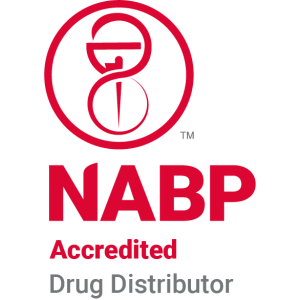Home infusion for arthritis management
A New Approach to Arthritis Treatment
Home infusion therapy has emerged as a convenient and effective alternative for managing chronic conditions like rheumatoid arthritis (RA). As more patients seek relief beyond traditional medications, understanding the nuances of home infusion becomes crucial. This article delves into what home infusions entail, the types of medications involved, potential side effects, and the overall costs associated with this therapy, emphasizing its growing role in arthritis management.
Understanding Home Infusion Therapy

What is home infusion therapy?
Home infusion therapy is the administration of medications or biologicals directly into the bloodstream through intravenous (IV) or subcutaneous methods, conducted in the patient’s own home. This approach is particularly beneficial for patients with chronic conditions, such as rheumatoid arthritis, when oral medications fail to provide adequate relief. By utilizing home infusion, patients can manage their conditions with greater independence and comfort, avoiding frequent hospital visits.
Components and procedures involved
Successful home infusion therapy involves several key components:
- Medications : These could be biologics or other treatments tailored to the patient's specific condition.
- Equipment : Patients require essential equipment such as IV pumps, tubes, and catheters to facilitate the infusion.
- Nursing services : Trained nurses provide the necessary education and support, teaching patients and caregivers how to safely administer infusions and manage potential side effects. Monitoring during and after the infusion is crucial to ensure patient safety.
Medicare coverage for home infusion
Under the 21st Century Cures Act, home infusion therapy is covered by Medicare for eligible patients, including the costs for medication administration, nursing services, and remote monitoring. This coverage aims to make treatment more accessible, particularly for individuals unable to receive care in traditional healthcare settings. Patients must have a prescription and proper support to qualify for this benefit, emphasizing the importance of coordinated care in managing chronic diseases efficiently.
Common Medications Used in Infusion Therapy

What are the most common infusions used for arthritis and other conditions?
Infusion therapy employs a range of biologic drugs primarily used for rheumatoid arthritis (RA) and other inflammatory conditions. Some widely recognized medications include:
| Medication Name | Generic Name | Administration & Effects |
|---|---|---|
| Remicade | Infliximab | Initial dose followed by maintenance doses, targeting inflammatory pathways. |
| Inflectra | Infliximab-dyyb | Similar to Remicade, designed for rapid action and relief. |
| Orencia | Abatacept | Given every two weeks, then monthly; alters the immune response to reduce inflammation. |
| Rituxan | Rituximab | Infusion regimen affecting B-cell activity, geared towards severe inflammation. |
| Cimzia | Certolizumab Pegol | Typically administered every two weeks; helps alleviate severe RA symptoms. |
| Simponi Aria | Golimumab | Monthly infusions; targets inflammatory mediators in the body. |
| Actemra | Tocilizumab | High efficacy indicated for RA management, with infusions every month. |
These medications are crucial for patients who experience inadequate control with oral therapies, enabling direct administration into the bloodstream.
Infusion therapy not only accelerates the onset of relief from symptoms such as swelling and pain but also aids in long-term disease management by preventing joint damage. Healthcare professionals monitor patients throughout the infusion process to safeguard against side effects, such as headaches or infusion-related reactions, thereby making the treatment a viable option for individuals who need more immediate or effective management of their arthritis symptoms.
Frequency and Scheduling of Infusions

How frequently are infusions needed?
The frequency of infusions for rheumatoid arthritis can vary significantly based on the specific biologic medication prescribed. For instance:
- Rituximab (Rituxan) : Typically given as two initial infusions, followed by maintenance every six months, totaling about four infusions per year.
- Actemra (tocilizumab) and Ocrevus (abatacept) : Require infusions every four weeks after initial doses.
- Infliximab (Remicade) : Usually administered approximately six times a year.
Overall, most patients may need infusions anywhere from monthly to several months apart, depending on their specific treatment plan and symptom management.
Scheduling infusions for RA management
Scheduling infusion therapies for rheumatoid arthritis involves collaborating closely with healthcare providers to determine the most effective plan. Each medication has its own administration schedule that depends on the patient's current condition and response to previous treatments. Regular monitoring and follow-ups ensure that adjustments can be made to optimize therapy and manage any side effects effectively.
Safety and Side Effects of Infusion Therapy

What are the potential side effects of infusions for rheumatoid arthritis?
Infusions for rheumatoid arthritis can lead to a variety of side effects, both mild and severe. Common side effects include pain, redness, or swelling at the injection site, headaches, nausea, and fatigue. More serious reactions may involve:
- Difficulty breathing
- Chest tightness
- Swelling of the face and hands
- Fever and chills
The biologic drugs used in these treatments can weaken the immune system, increasing the risk of infections and necessitating close monitoring for potential complications. Additionally, long-term use of some biologics may raise the risk of certain cancers and gastrointestinal issues, making it crucial for patients to remain vigilant about any unusual symptoms.
How is safety monitored and managed during infusion therapy?
Safety monitoring during infusion therapy is rigorous and essential to ensuring patient well-being. Healthcare professionals typically:
- Monitor vital signs throughout the infusion process, keeping track of heart rate, blood pressure, and temperature.
- Assess the infusion site for any signs of adverse reactions, such as excessive redness or swelling.
- Provide immediate intervention in case of any severe reactions, ensuring quick access to emergency treatment.
Patients are also educated on potential side effects and encouraged to report any concerning symptoms immediately. With proper monitoring and management protocols, the infusion therapy process becomes safer, facilitating timely attention to any side effects that may arise.
Financial Consideration of Infusion Therapy

What is the cost of infusion therapy for rheumatoid arthritis?
The cost of infusion therapy for rheumatoid arthritis can be substantial, typically exceeding $45,000 annually. This financial burden stems primarily from the use of biologic medications, which are central to treatment. For instance, the estimated annual costs for specific biologic drugs are as follows:
| Medication | Estimated Annual Cost |
|---|---|
| Rituximab | $36,663 |
| Tocilizumab | $36,821 |
| Infliximab | $44,973 |
| Abatacept | $46,532 |
These biologic agents account for 87% to 91% of the total costs associated with infusion therapy. Additionally, labor costs significantly affect overall expenses, contributing around 53% to 57%.
Patients may encounter high out-of-pocket costs, even with insurance coverage, making it essential to evaluate both treatment options and insurance plans carefully.
Considering Home Infusion for RA
As the adoption of home infusion therapy grows, patients with rheumatoid arthritis may find this option appealing due to its convenience, potential for enhancing quality of life, and effectiveness in symptom management. While the financial, procedural, and safety aspects require thoughtful consideration, the advantages of home-based care could provide a significant improvement for those struggling with traditional treatment limitations. Future advancements and policy supports might further aid in integrating home infusion therapy into standard arthritis care protocols, offering a comforting alternative for many.
References
- Infusion Treatments for Rheumatoid Arthritis: Pros & Cons - WebMD
- Five things to know about home infusion - M Health Fairview
- Home infusion therapy | Home care providers | NHIA
- Can Infusion Therapy Help With Your Arthritis?
- Infusion Services | Johns Hopkins Care at Home
- Home Infusion – It's Safe, Effective and the Preferred Site of Care for ...
- Home Infusion Therapy/Home IVIG Services - CMS













